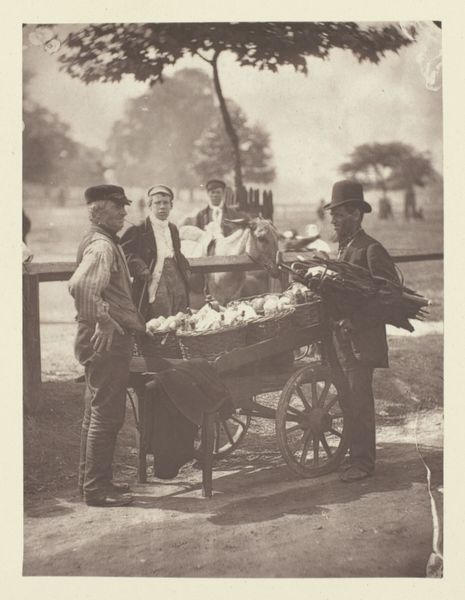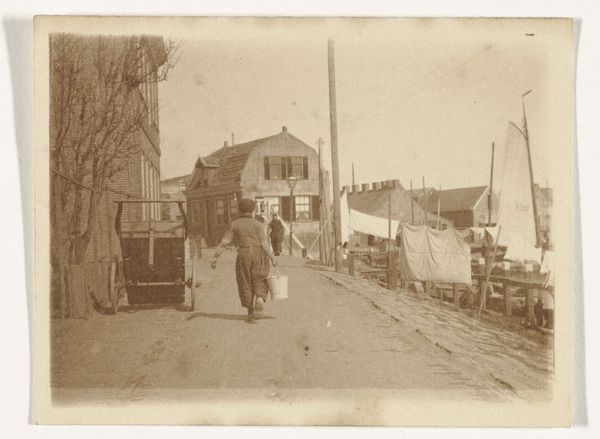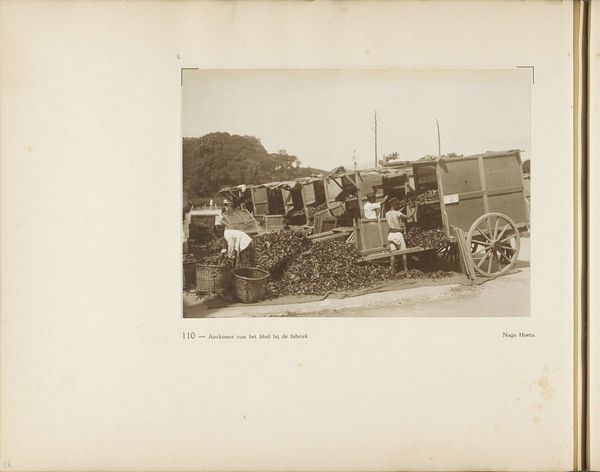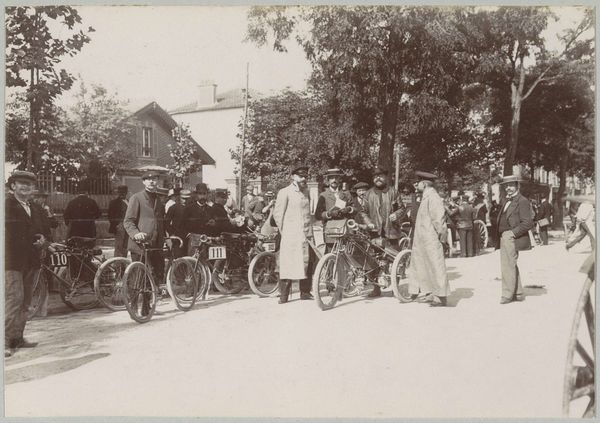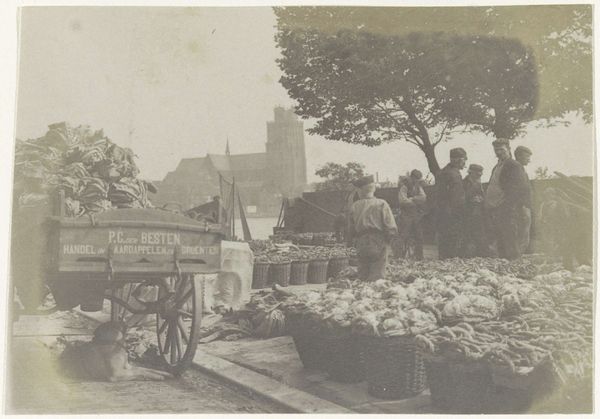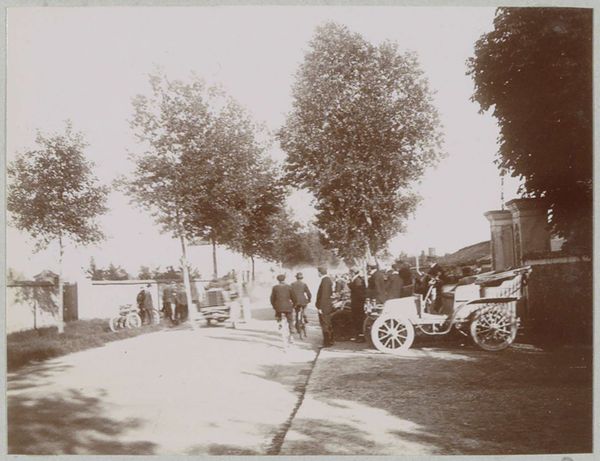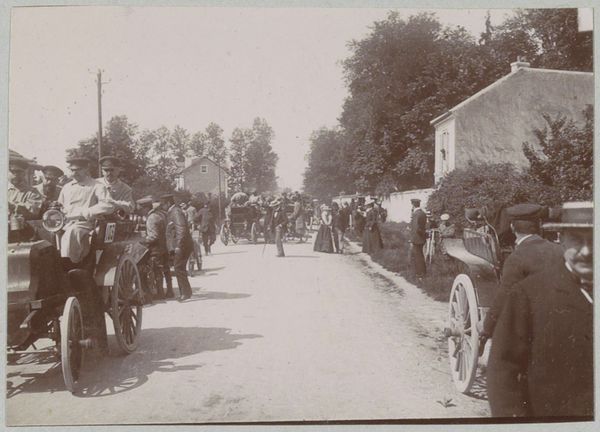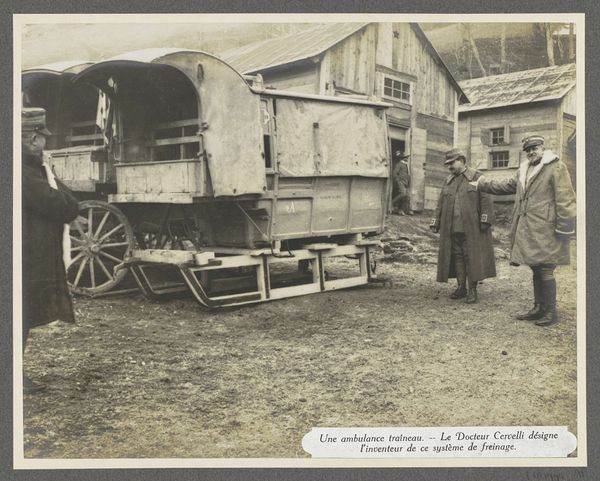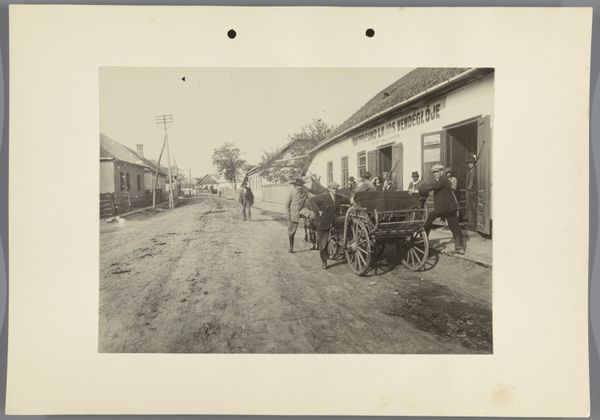
photography
#
portrait
#
dutch-golden-age
#
photography
#
cityscape
#
street
#
realism
Dimensions: height 108 mm, width 153 mm
Copyright: Rijks Museum: Open Domain
Curator: Welcome. We are looking at “Workmen by a cart with reed baskets on the Prins Hendrikkade,” a photograph taken in 1904 by James Higson. It's an albumen print. Editor: There's such a quiet stillness to this photograph. The muted sepia tones give it this feeling of almost… faded memory. It's a busy street scene, but the composition makes it feel rather calm. Curator: It's interesting you say memory because photographs such as this really create an ongoing cultural memory of city life and labor during the turn of the century. Look at the careful staging – it is a record of a time, people, and a place gone by. Editor: Exactly. And I wonder what those reed baskets contained. What were they transporting through the city? The men and the boy standing there… It captures a very specific class dynamic. You can see the labor happening on the street. Curator: There is a simplicity to the work, a functional aesthetic conveyed by the worker's clothing. Consider what the hats worn may communicate. Even that cloth draped over the second cart—almost like a religious shroud—it's intriguing, offering layers of questions about meaning and cultural messaging. Editor: I'm wondering, though, who exactly was Higson documenting with this image, and to what end? Did he see this moment as emblematic of Dutch identity or working-class struggles, or was it for some other political intention that he decided to stage this and memorialize this time and these people? Curator: His photographic gaze provides a snapshot into a society grappling with modernization and urbanization. Even if not intended as such, it becomes a window onto their lived experience. The cobblestone streets, the fashion, the signage—it creates a mosaic of early twentieth-century Amsterdam. Editor: It truly makes you consider the narratives that often get overlooked. Beyond the aesthetic appeal, what statements do we find in such a photo? I mean, if nothing else, that small boy’s stance shows the kind of innocence lost through child labor. Curator: Precisely, such visual cues are the key to understanding societal evolution. Editor: Thanks, that shifted how I’m seeing this; food for thought. Curator: Indeed, it gives us much to ponder.
Comments
No comments
Be the first to comment and join the conversation on the ultimate creative platform.

